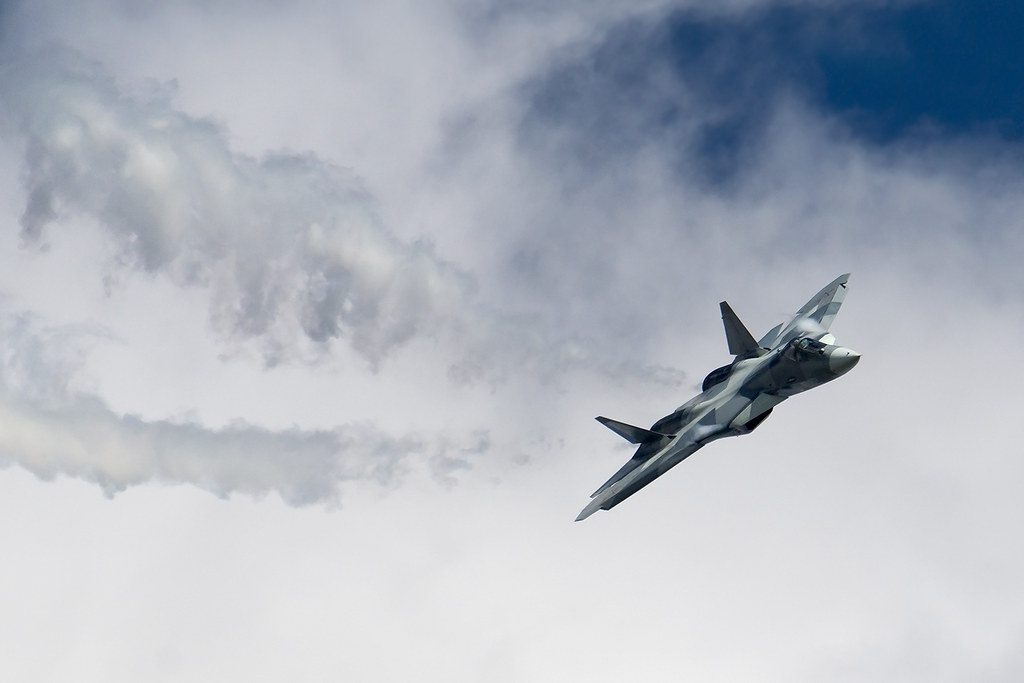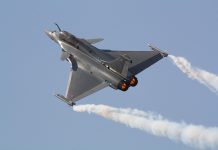
Sukhoi, a key division of Russia’s United Aircraft Corporation (UAC), appears to be advancing its Su-57 Felon fighter jet design with the integration of flat engine nozzles, as evidenced by newly released footage. This revelation coincides with a documentary commemorating the 85th anniversary of the Sukhoi and MiG design bureaus, set to debut on Russia’s state-run Channel One. The footage provides the first official confirmation of these previously speculative modifications.
Initial indications of flat nozzle development for the Su-57 emerged in mid-2023, with reports citing unnamed sources in the aerospace sector. The documentary footage now substantiates these claims, signaling a significant step forward in stealth technology. The flat nozzles maintain thrust-vectoring capabilities while reducing radar cross-section and infrared signatures, enhancing the Su-57’s stealth and survivability as a fifth-generation fighter.
Currently, the Su-57 is powered by the AL-41F1 engine, derived from the Su-35’s propulsion system. However, its long-term capabilities will rely on the advanced “Izdeliye 30” engine, characterized by improved performance and serrated nozzle petals. While the Izdeliye 30 has been showcased in previous tests, including on the Su-57LL demonstrator and at a Chinese airshow, the flat nozzle variant represents a new frontier in design strategy. Chief designer Mikhail Strelets has highlighted the flat nozzles’ role in reducing radar and thermal signatures, suggesting they could redefine Russian stealth technology.
The development of flat nozzles poses significant engineering challenges, requiring adjustments to both the engine and airframe. This complexity may partially explain the protracted timeline for the second-stage engine’s full-scale production. Beyond the Su-57, these innovations could influence future platforms, such as the Su-75 Checkmate and the S-70 Okhotnik UCAV, enhancing their stealth and operational capabilities.
Flat nozzles bring substantial advantages to fifth-generation fighters. They disrupt radar reflections by scattering waves unpredictably, reducing detectability in contested airspaces. Additionally, they lower infrared signatures by dispersing exhaust heat, offering protection against heat-seeking missiles. Aerodynamically, they can improve fuel efficiency and range, critical for multirole missions requiring operational flexibility. Crucially, these nozzles retain thrust-vectoring capabilities, preserving the Su-57’s agility in dogfighting scenarios.
The flat nozzle’s development aligns with global trends in advanced propulsion technologies. The Lockheed Martin F-22 Raptor, the world’s first operational fifth-generation stealth fighter, employs flat nozzles integrated with its Pratt & Whitney F119 engines. These nozzles enhance stealth while maintaining superior maneuverability, setting a benchmark for modern air combat. Similarly, early experiments like the Boeing X-32 and ongoing research in nations such as China and Japan underscore the strategic importance of flat nozzle technology in future aerospace platforms.
Although Russia lags behind the United States in deploying operational flat nozzle-equipped aircraft, these developments indicate progress in closing the technological gap. The Su-57’s flat nozzles underscore a broader effort by Sukhoi to advance Russia’s capabilities in stealth and performance, ensuring its relevance in the competitive landscape of fifth- and sixth-generation air combat.




